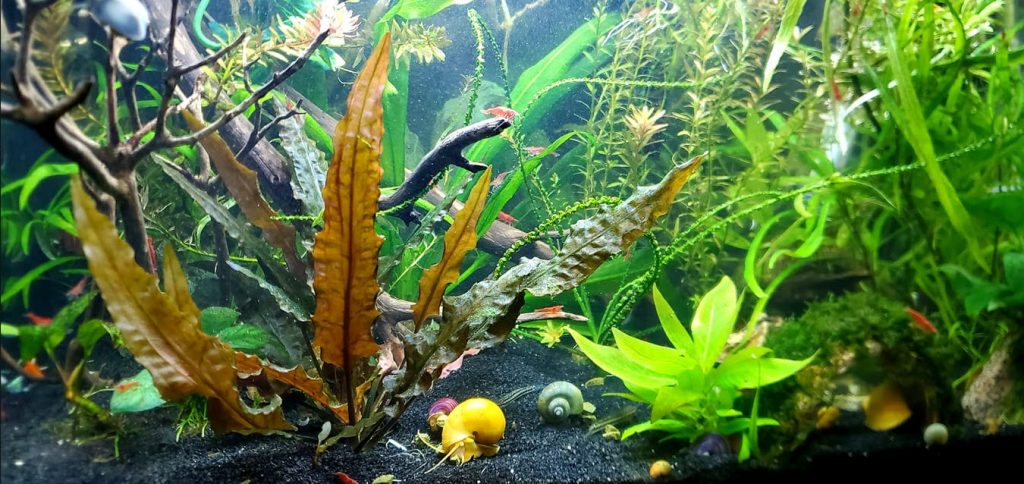
Beginners to the aquarium hobby tend to obsess about things like pH. The simple fact of the matter is that pH just isn’t very important. And pH swings, even very rapid ones, are harmless to fish. This is a long and boring analysis which will only be of interest to real nerds like the author.
Science and Research on Temperature Swings and Fish
Per the book “Environmental Biology of Fishes”, Malcolm Jobling, Page 479:
“The safe range of environmental pH for the survival of fish is approximately 5-9, but productivity is maximized in waters of a pH 6.5 to 8.5”.
There is a lot of research which shows that most fish can be severely impacted by low pH below 5.0 (actually the research says most fish are negatively impacted by total dissolved solids or TDS below 50). But there is no research which shows any fish severely impacted by high pH values. The reason for this is simple, the major impact of low pH is due to the low total dissolved solids of low pH water, not the pH of the water.
Freshwater fish need to prevent salts from moving out through their gills into the surrounding water. In very low total dissolved solids water (which coincidentally is also low pH water) this is a challenge which only fish from environments like the black water Rio Negro can accomplish. But take a black water fish from the Rio Negro and put them in a moderately higher concentration of salts such as is found in most 8.0 to 8.5 pH water and they do just fine. (“Ion Transport, Osmoregulation, and Acid-Base Balance”, Marshall et al. 2006, and ‘The Physiology of Tropical Fishes”, Val et. al. page 397, 2006).
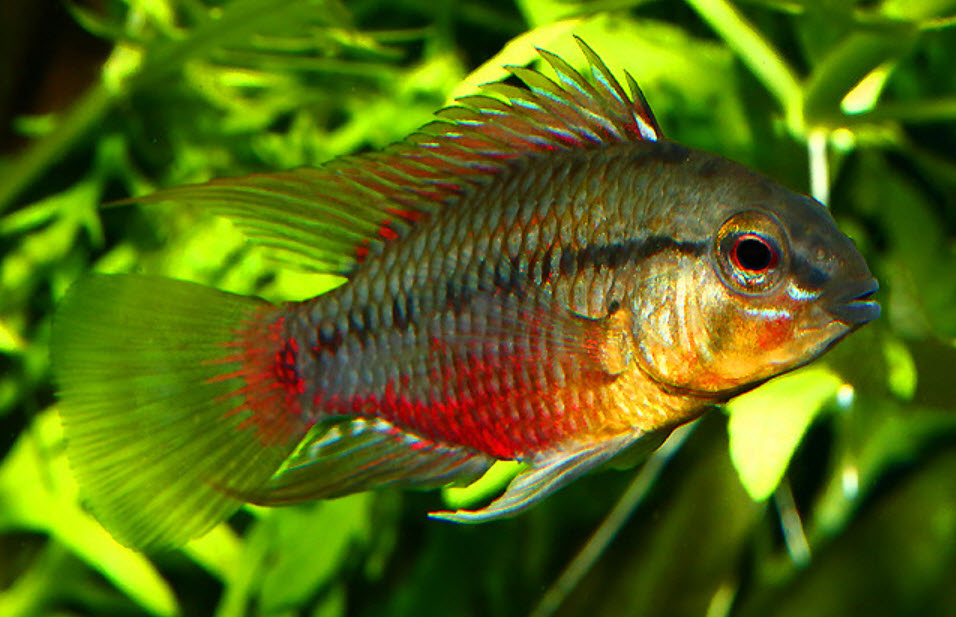
Most fish have a blood pH of 7.7 to 8.0 (Evans and Claiborne, 1997; Tzaneva et al., 2011). Logically the less the difference between the blood pH and the water pH the easier it will be on the fish. This decidedly supports the 6.5 to 8.5 range.
One very pertinent study was done recently on the effect of pH on what many consider the fish most sensitive to pH, namely the discus. “Effect of Varying Water pH on Hormonal and Haematological Parameters of Discus (Symphysodon aequifasciatus)”. S. Swain et. al. 2019:
“The experiment was conducted to examine the effect of varying water pH on haematological and hormonal parameters of popular freshwater aquarium fish discus (Symphysodon aequifasciatus). Discus brooders were reared in acidic (4.5, 5.5 and 6.5) and alkaline (7.5, 8.5 and 9.5) pH levels for a period of 90 days. Significant variation were noted for all haematological parameters such as total erythrocyte count (TEC) and total leukocyte count (TLC), supported with significant increase (P<0.05) in serum glucose and cortisol at the extreme pH condition of 4.5 and 9.5. These results specify that extreme pH has an adverse effect on the physiology of discus and a pH level of 6.5 can be considered conducive for rearing of this species“.
There was no detrimental effect from pHs of 5.5, 6.5, 7.5 and 8.5. on discus, a known sensitive fish. I.e. discus do just fine in 8.5 water IF the bacterial count is very low. Only 4.5 and 9.5 pHs had significant effects on the discus over a span of ninety days.
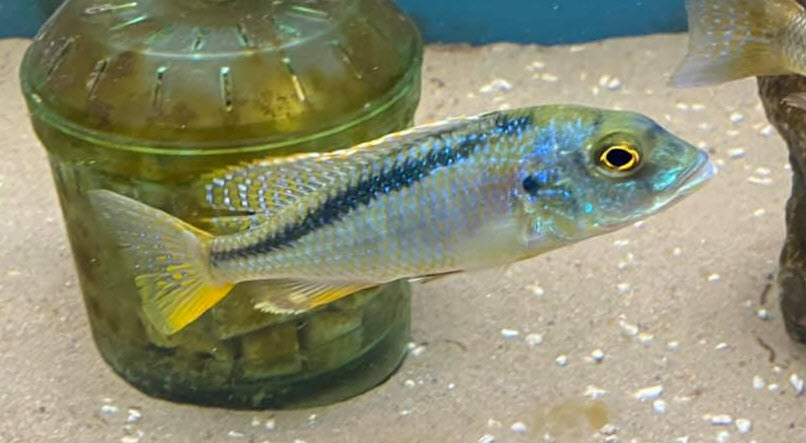
If a freshwater tropical fish is kept in an aquarium where the average pH is between 6.5 and 8.5 they will typically due very well. Those newcomers to the hobby who stress out over their pH not being “where my type of fish need it to be” are just stressing out completely needlessly.

.
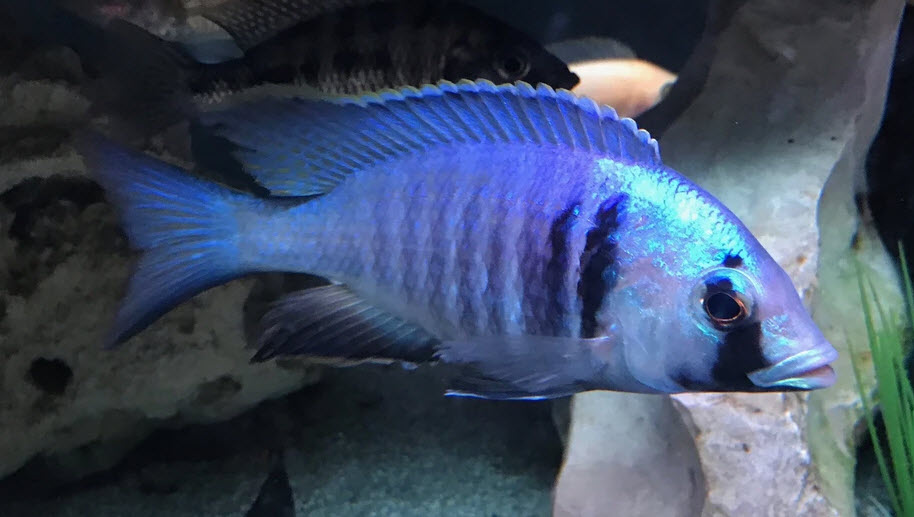
Aquarium pH is not Stable
Many people measure their pH and get upset when it is 6.5 in the morning and 8.2 in the afternoon. Or they measure 7.2 and come on to social media and ask if it would be better if they had a 6.7 pH. pH is simply not stable enough to get worried about. Indeed, the pH tests are not accurate to but about plus or minus 0.3 pH points. Indeed, even electronic meters are very inaccurate.
Carbon dioxide is acidic. The level of carbon dioxide in an aquarium varies on an hourly basis. So it is just a very fruitless pursuit to try and achieve an “ideal” pH.
And many think that fish must be kept in a very stable pH or temperature and that rapid changes are detrimental to the fish. This is yet another myth.
4.8. Stability Isn’t Important
Scientific research shows pH swings, even very rapid ones, are harmless.

KH, Carbon Dioxide and pH
In any aquarium with low KH, pH goes up and down constantly and unpredictably. This is because of carbon dioxide. Carbon dioxide in the water makes water acid. The following things add carbon dioxide and reduce pH:
- Almost all living things in darkness, including plants and most bacteria
- Decomposing organic matter, including food, feces, organic soil and dead plants.
- Tap water with high levels of carbon dioxide (very common)
The following things remove carbon dioxide and increase pH:
- Green plants and algae in light
- Any type of aeration
- Tap water with low carbon dioxide
In addition the oxidation of ammonia to nitrate will acidify the water, complicating the picture even further. So obviously the pH can vary considerably in an aquarium with low KH, a range of 6.0 to 8.5 in a matter of hours is not unusual at 1 KH. These pH swings are totally harmless.
Many say that if the pH swing from a low pH to a high pH the relatively harmless ammonium in the water will be converted to harmful ammonia and the fish will suffer. Virtually all the aquarium ammonia tests measure the TOTAL “ammonia”, i.e. ammonium plus ammonia. And in any aquarium with decent filtration the “ammonia” test should register zero. So any healthy aquarium should not have ammonium to be converted to ammonia at a high pH.
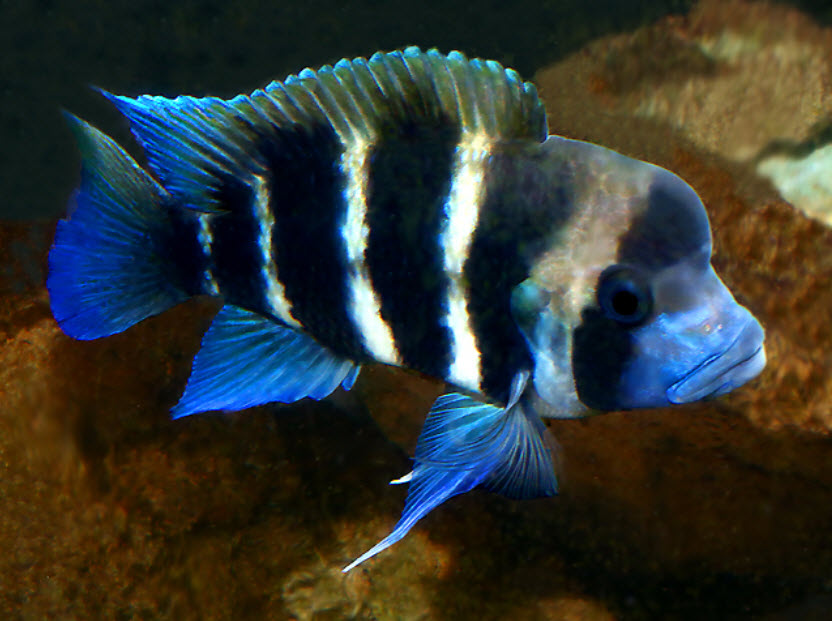
Tap Water pH Swings
Another aspect of carbon dioxide is how it affects tap water over time. A common thread about pH is: “My tap water is 6.3 but my aquarium water goes from 7.0 after a water changes to 7.8 after a day”. The tap water contains carbon dioxide which makes it acid. The carbon dioxide is removed by aeration and the pH of the aquarium rises.
Another common refrain is: “My tap water is 7.5 but my aquarium goes from 7.0 after a water change to 6.5 in one day.” In this case the tap water is deficient in carbon dioxide and the aquarium aeration adds carbon dioxide to it.
We go into more depth on this in this link:
4.4.3. Carbon Dioxide and pH
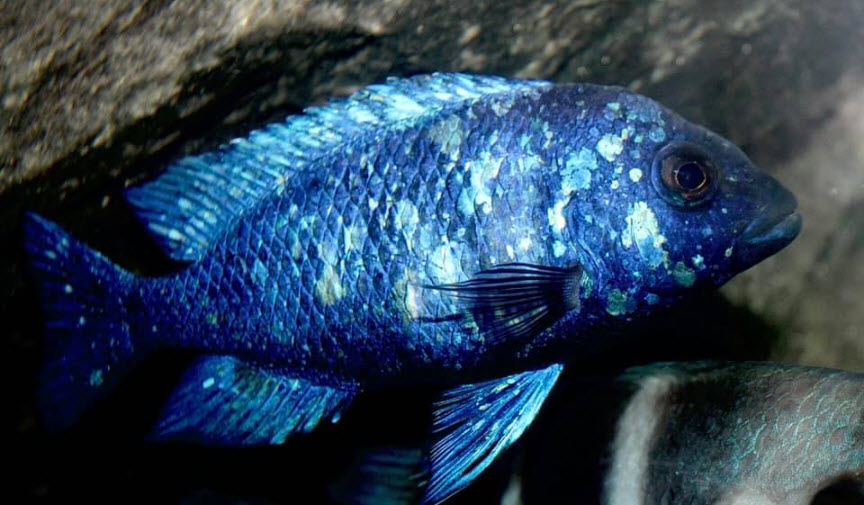
High KH Water
Note that KH (carbonate hardness) “buffers” water to a high pH, meaning a high KH makes it difficult to vary or lower the pH. At a KH of 10 the pH might go from 7.6 to 8.3 with a lot of light and some plants. At a KH of 1 a pH range in the same tank might be 6.0 to 9.0.
We go into this in more depth in this link:
4.4.2. Buffering the Water
.
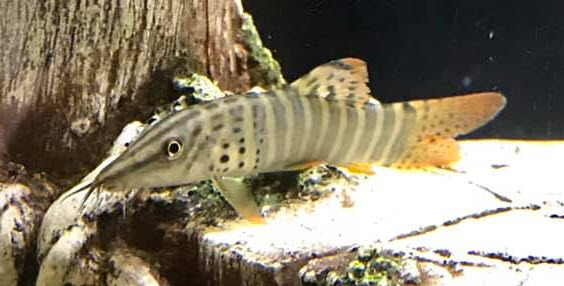
pH is Logarithmic
What is often missed is that pH is a 10X logarithmic relationship CENTERED on a pH of 7.0. So if an aquarium is at a pH of 6.5 that is very, very weakly acid. And a pH of 7.5 is very, very weakly alkaline. So a fish can live quite easily at a pH outside its native waters as long as it is somewhere between roughly an average of 6.5, and an average of 8.5. It’s just nowhere as near important a some would lead us to believe.
To illustrate this logarithmic relationship, imagine a 7.0 pH aquarium being made alkaline by adding a very weak solution of lye (sodium hydroxide, an alkaline substance). And the same 7.0 pH aquarium water being made acidic by adding a very weak solution of pool acid (hydrochloric acid, an acid substance):
- One drop of weak lye solution takes the pH to 7.5
- Three drops of weak lye solution take the pH to 8.0
- Ten drops of weak lye take the pH to 8.5
- Thirty drops of weak lye take the pH to 9.0
- One drop of weak acid takes the pH to 6.5
- Three drops of weak acid take the pH to 6.0
- Ten drops of weak acid take the pH to 5.5
- Thirty drops of weak acid take the pH to 5.0
Note the progression: one-three-ten-thirty. This illustrates why there is simply not much difference between 6.5 pH and 7.5 pH. The difference between 6.5 and 7.5 is only two drops! If a fish from water with a pH of 6.5 is plopped into 7.5 pH water, there will be absolutely no effect on the fish. It will not “shock them”.
Note this progression is only for illustration of the logarithmic effect. There is no reason to get exacting with the strength of the lye or acid or to get exact with the amount of water. It is not important.

Mixing pH Biotopes
The only limitation on mixing biotopes is with low pHs. Most fish (and especially Rift Valley Cichlids) do best above 7.0 pH simply because a pH below 7.0 can be poor in salts and cause the blood of the fish to lose its salt to the water. The only exception to this is fish that are normally found in blackwater.
In all probability, a Malawi cichlid kept at a soft 6.5 pH will have a slightly increased risk of disease. It can be done successfully but it will probably involve small compromises. The fish will be less able to handle challenges such as stress. On the other hand a blackwater fish can be kept quite easily in very high pH, hard water. Because of the relationships of total dissolved solids and pH, higher pH is not as much of a problem as low pH.
There is a very pertinent research paper on one of the most sensitive of fishes, the cardinal tetra (“Tolerance to Temperature, pH, Ammonia and Nitrite in Cardinal Tetra, Paracheirodon axelrodi, an Amazonian Ornamental Fish”, de OliveiraI et. al. 2008,)
“Poor water quality condition has been pointed out as one of the major causes for the high mortality of ornamental fishes exported from the state of Amazonas, Brazil. The purpose of the current study was to define water quality standards for cardinal tetra (Paracheirodon axelrodi), by establishing the lower and higher for lethal temperature (LT50), lethal concentration (LC50) for total ammonia and nitrite and LC50 for acid and alkaline pH. According to the findings, cardinal tetra is rather tolerant to high temperature (33.30 C), to a wide pH range (acid pH=2.9 and alkaline pH=8.8) and to high total ammonia concentration (23.7 mg/L). However, temperatures below 19.6o C and nitrite concentrations above 1.1 mg/L NO2- may compromise fish survival especially during long shipment abroad.”
So the cardinal survived short term exposure to 8.8 pH. The cardinal is a known sensitive fish which is normally found in acid water. This is very telling. It says pH is not the huge problem it is made out to be.
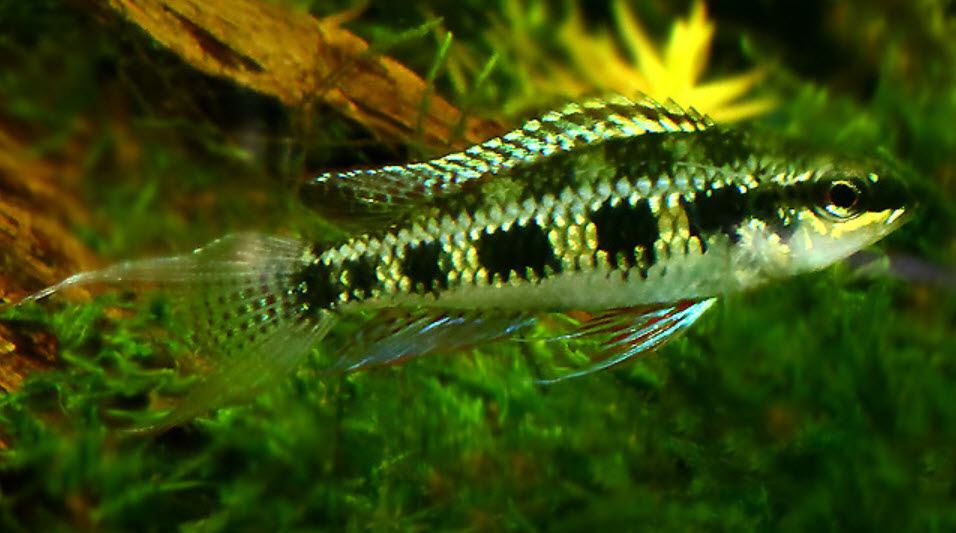
The Oscar, a blackwater fish known to be sensitive to the water (it easily succumbs to hole-in-the-head in unsuitable water), is invasive in Florida. Florida surface water have pH of 8.0 to 8.5. The author lives on a river in South Florida and there are zillions of small two to three inch Oscars in that alkaline river water.
The author has raised and bred Lake Malawi cichlids, Lake Tanganyikan cichlids, guppies, mollies and platies in the soft acid water of Connecticut. The author has also raised and bred blackwater rams in the hard alkaline waters of Florida.
Note also that there are some well intentioned but ill-informed commentators on social media who ascribe to a dogma that fish absolutely must be kept in the pH of their native waters. They say anything else is animal cruelty. This is incorrect. There are hundreds of photos and videos on social media of mixed biotope aquariums of fish with very large differences in their native pH’s. The fish do just fine.
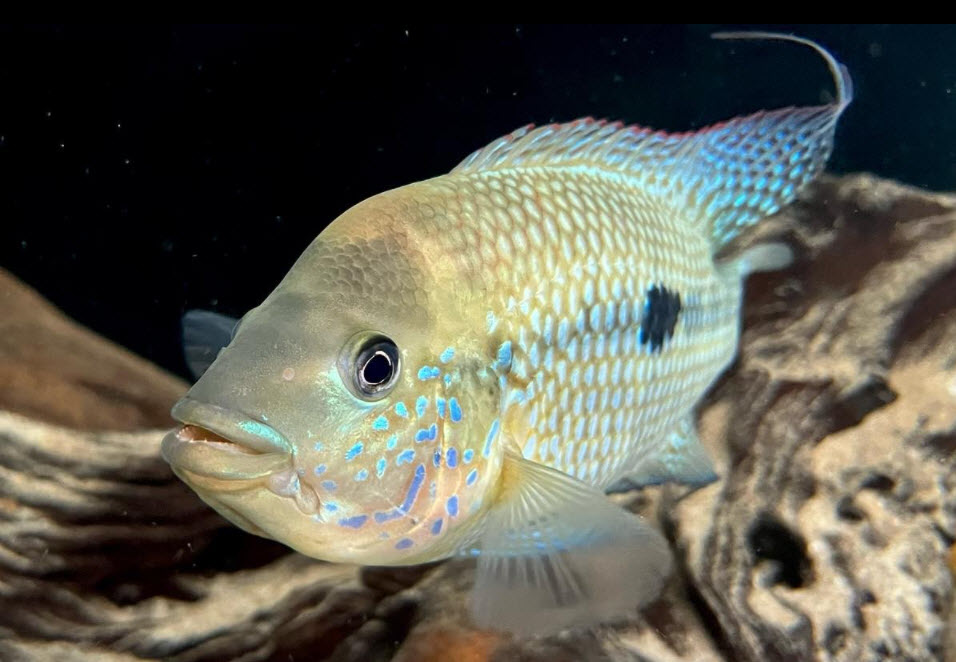
There is a YouTube channel called “Ohio Fish Rescue” which has a whole host of tanks with very large fish in them. There are acid blackwater fish like Oscars and Pacus swimming side by side with alkaline Lake Tanganyika fish such as Frontosas. And they are all doing just fine. You could not ask for healthier aquariums or healthier fish.
There used to be a fish store in Venice Florida called “Father Fish”. He largely sold aquarium plants but had literally hundreds of aquariums filled with all sorts of freshwater fish in a mad jumble. For his freshwater he used reject water from his RO unit which he used to make his saltwater tanks up. Since he is in Venice his water was undoubtedly very hard and alkaline. And he was making it more hard by taking out RO water first. Yet he had all sorts of Amazon fish in with all sorts of African fish and all sorts of Asian fish. He had very heavy stocking in all the tanks. His were some of the healthiest tanks I’ve ever seen.
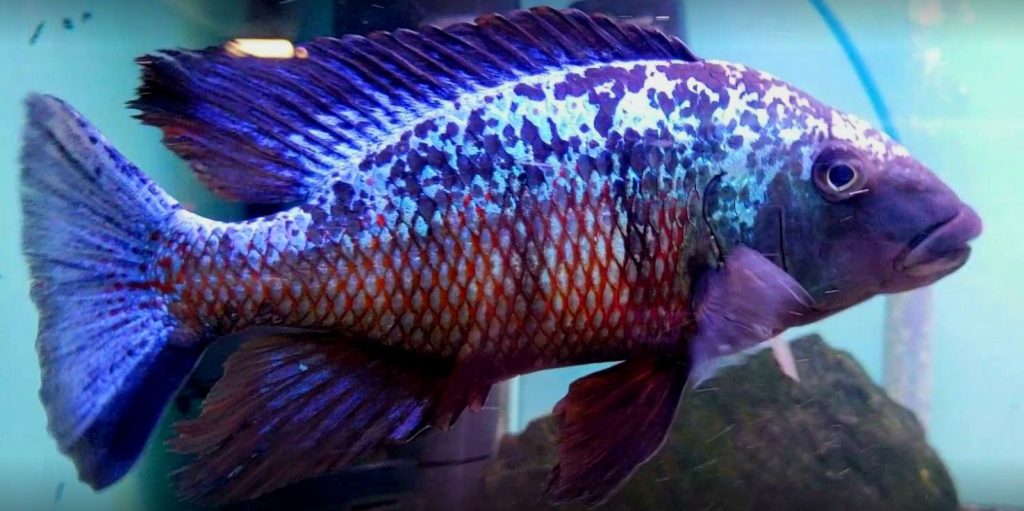
Acid Blackwater pH
If the perfectionists among us has fish from the blackwaters of Northern South America (Rio Negro and Orinoco) one can modify the water to a pH of 5.0 to 6.5. But be prepared for the aquarium to take up to two years to cycle as the archaea that oxidize ammonia at acid pHs divide very slowly.
Note that if your water is a high pH out of the tap this can be a real challenge. Many try to acidify by adding driftwood, oak leaves or peat. These materials won’t acidify a high pH water.
Low pH buffers won’t do it either. Concentrated hydrochloric acid is required to bring it down. I know. I tried bringing down an 8.1 pH with acid buffers and oak leaves and couldn’t budge it even 0.1 pH. I ended up literally pouring concentrated hydrochloric acid into the aquarium.
The blackwater aquarium is delved into in more depth in this link:
17.3. Blackwater Fish
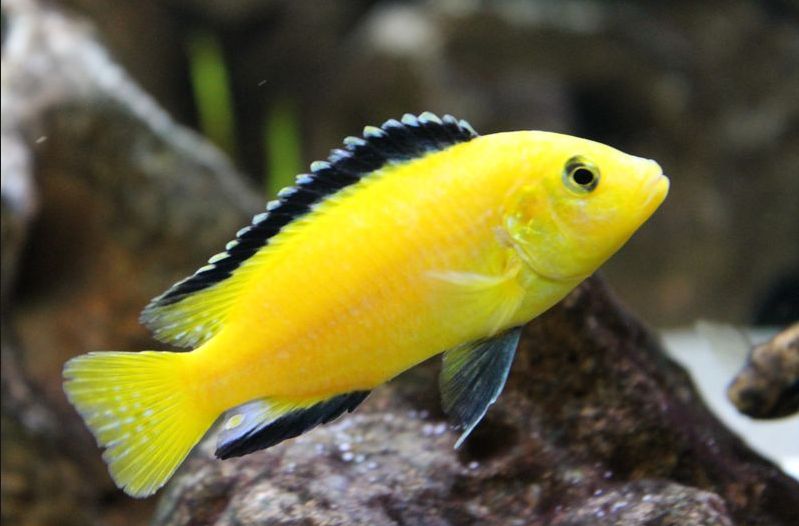
Limitations on pH
Of course, the axiom that pH is relatively unimportant has its limitations. At a pH of 9.0 even 0.025 ppm of ammonia is poisonous, making it more toxic than chlorine. And 0.25 of nitrite is poisonous at a pH of 6.0. Below a pH of 6.5 the nitrogen cycle slows down and it basically stops at 6.0. So ammonia and nitrite can become a problem at low pH.
We should make one note on low pH and “beneficial bacteria”. There is a type of “beneficial bacteria” which grows at low pH called archaea. But this type of organism (which technically is not a bacteria) is extremely slow growing. So an acid tank will take four to twelve months to “cycle” successfully. And nitrite is very toxic at these pH’s, so nitrite becomes a problem.
These pH’s occur in Lake Tanganyika (>8.5) and in the Rio Negro River (<6.0) and don’t kill the fish because the large volume of water dilutes the ammonia and the nitrite. In the small water volume of an aquarium these pH’s are deadly and should be avoided. A pH of between 6.5 and 8.5 is what needs to be striven for.

Breeding and Raising Fish and pH
If one is breeding and raising fish, it is generally “optimum” to keep the fish and the eggs and/or fry in water with a pH duplicating the fish species native waters. Research shows that the survival rates of eggs and tiny fry are best in conditions which duplicate the native waters. This is especially true of blackwater fish.
One researcher found a very dramatic effect of high pH on the eggs of the popular angelfish. “Early Ontogenesis of the Angelfish, Pterophyllum scalare”, A. Korzelecka-Orkisz, et. al. 2010:
“The survival rate of embryos and larvae kept in water with an elevated, slightly alkaline pH of 8.2 was very low: as few as 2% of the embryos survived, while in the batch kept in optimal water conditions of 6.8 pH very few eggs died.”
It is unfortunate that there were only two levels in this study. But it does indicate that some fish are very sensitive when it comes to their eggs and fry.
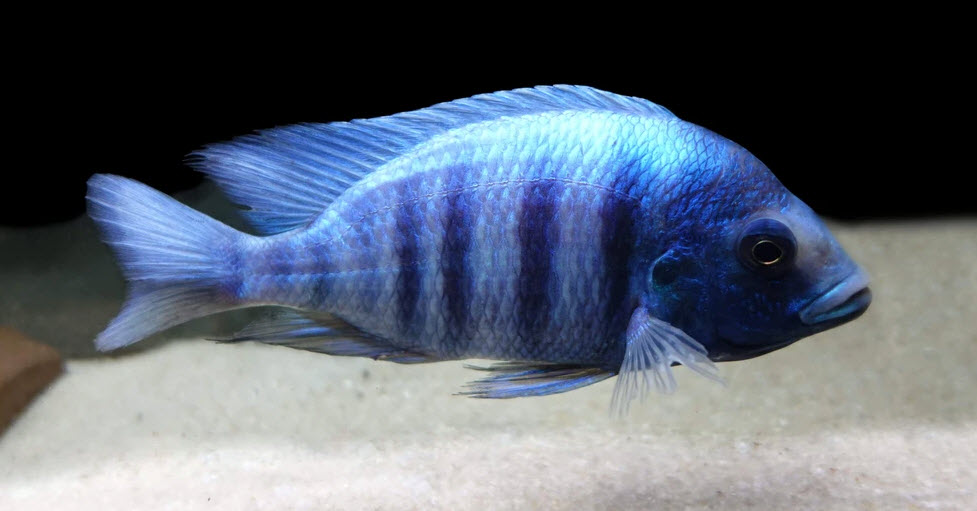
Another researcher found much more tolerance to fish eggs and fry of the Far Eastern Catfish. “Effects of pH on Fertilization and the Hatching Rates of Far Eastern Catfish Silurus asotus”, Gao, 2011:

This study showed reasonably close survival rates of fry at any pH from 4 to 8. But it also indicates that there clearly is an “optimum” pH of about 7.0 in this hardy fish. Thus the recommendation to duplicate native water with eggs and fry. But also note that the survival rates are “good” at 6.0 to 8.0 pH, the difference only being some 10%. So this is hardly a dictate that one needs to be at native water pH.
There is no research beyond these two article that we could find which relate in any way to freshwater aquarium fish. A lot of studies have been done on how extreme acid conditions affect Atlantic salmon and trout but those are hardly applicable to the aquarium. These studies all said salmon and trout eggs and larvae are only severely impacted by pH below 6.0. or above 9.0.
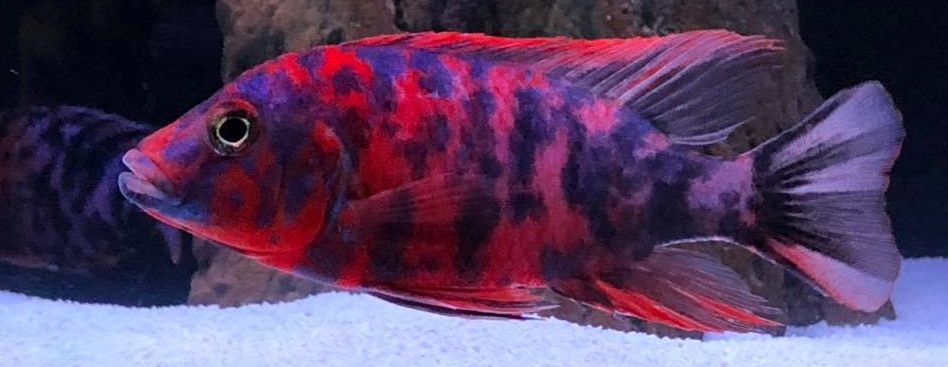
pH in Depth
For those interested in a more in depth discussion of pH click on the following links:
Link to general discussion of pH:
4.4. Aquarium pH
A difficult to understand part of pH is the concept of “buffering”. Some consider it important to buffer an aquarium. We do not consider it important but it is a harmless practice.
4.4.2. Buffering the Water
pH goes up and down constantly in an aquarium because of carbon dioxide and how it interacts with water. This is very complex topic best ignored by all but high tech planted aquarium enthusiasts:
4.4.3. Carbon Dioxide and pH
There are situations when one has a pH greater than 8.5 and one needs to drop the pH. This link covers how to safely drop the pH of water
4.4.4. Dropping pH
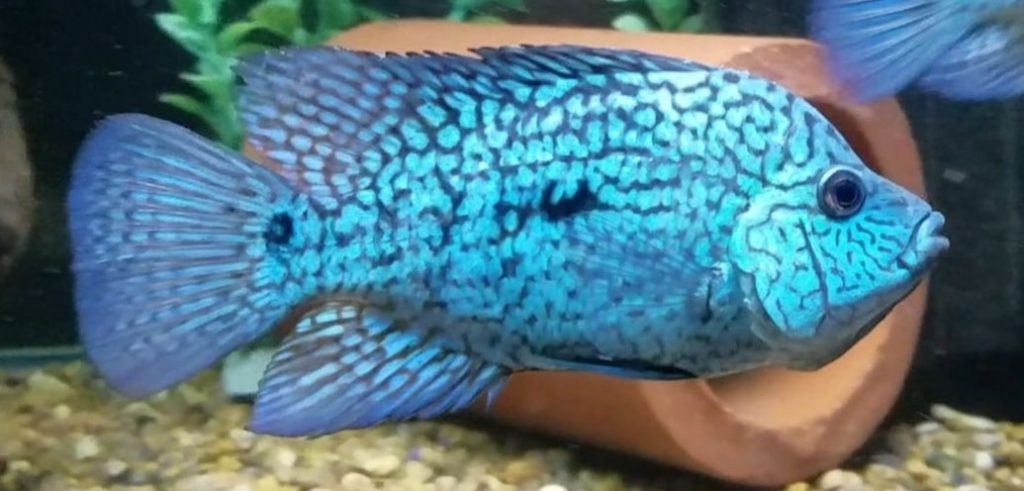
And sometimes water out of the faucet that has set for two days has a pH less than 6.5 and needs to be raised. This link covers how to safely raise the pH:
4.4.5. Raising pH
Many people think that fish which have been bred in a wide range of waters can thus tolerate a wide range of water. This is simply a myth.
4.7. Fish Tolerance to pH
And many think that fish must be kept in a very stable pH or temperature and that rapid changes are detrimental to the fish. This is yet another myth.
4.8. Stability Isn’t Important
.
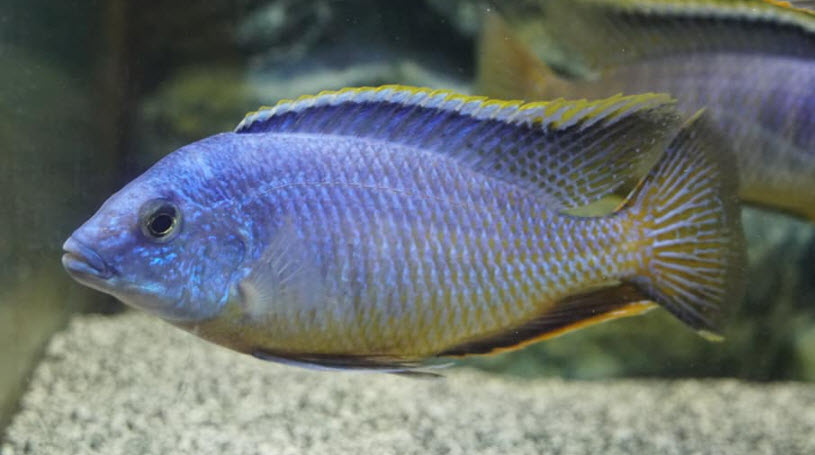
.
Return to Temperature, pH, KH and GH
.
Aquarium Science Website
The chapters shown below or on the right side in maroon lead to close to 400 articles on all aspects of keeping a freshwater aquarium. These articles have NO links to profit making sites and are thus unbiased in their recommendations, unlike all the for-profit sites you will find with Google. Bookmark and browse!
.

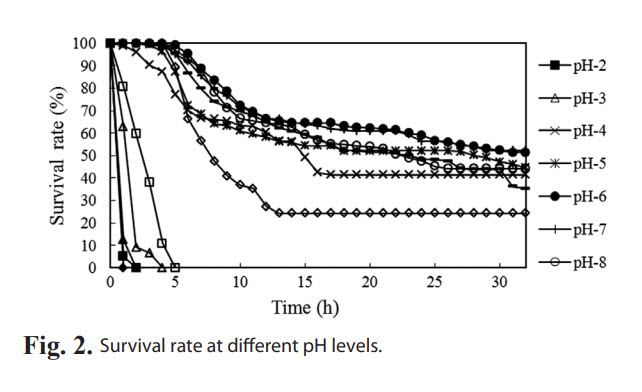
Kev says
Hi Dave,
Me again, sorry! I’ve commented on a few of your articles now and have one final (hopefully!) question about my tap water and the best way to proceed…
Hard London tap water which leaves the tap at 7.0 pH and climbs to 8.8 pH after aeration. KH is 12. It seems I have loads of CO2 in the tap water as we discussed previously.
How critical is it that I reduce the pH down to 8.5 or below, in your opinion? I keep Malawi cichlids and massively overfilter my tanks with good quality biomedia – fluidized K1, Poret at 20/30PPI and pot scrubbies, I also have some undergravel filters in some of the tanks alongside the HMFs/sponge fillers.
I was planning on setting up a continuous drip water change system but the thought of having to be out there messing with the pH has kind of put me off that idea. I suppose I could use two barrels; one for tap to be prepared in, which is then pumped to another which is the one feeding my continuous drip. But then I’ll be losing a bunch of space to the barrels, and I need as much space as I can get for more tanks obviously!
Dave says
In reply to Kseniya …. I don’t know. I’ve never run across any research on it. My gut feel is that the colonies will suffer.
Kseniya A. says
Hi Dave,
I’ve read the article about pH, so far so good, one of the things that got my attention was:
“….one can modify the water to a pH of 5.0 to 6.5. But be prepared for the aquarium to take up to two years to cycle as the archaea that oxidize ammonia at acid pHs divide very slowly.”
I have a question, may be a little to over thinking:
If a taken “aged” aquarium with a stable bio-filtration and pH of 8 is converted to a low pH aquarium, like, 6-6.5 – will the bacteria colonies suffer/die due to the harsh change of pH?
Dave says
In reply to Tathagata …. The exact numbers are immaterial. It is only for illustration of the logarithmic scale.
Tathagata says
Hi Dave,
“One drop of weak lye solution takes the pH to 7.5” — this is for what volume of water ?